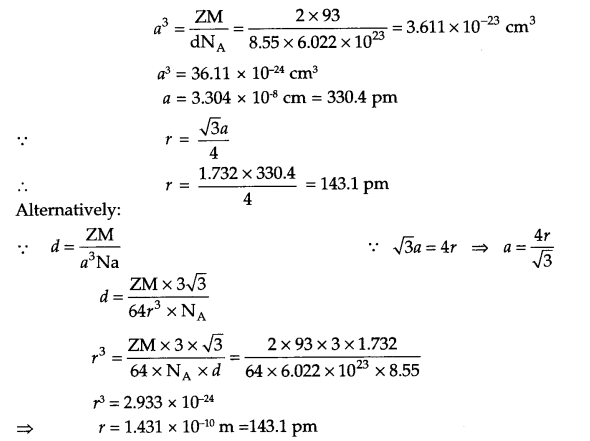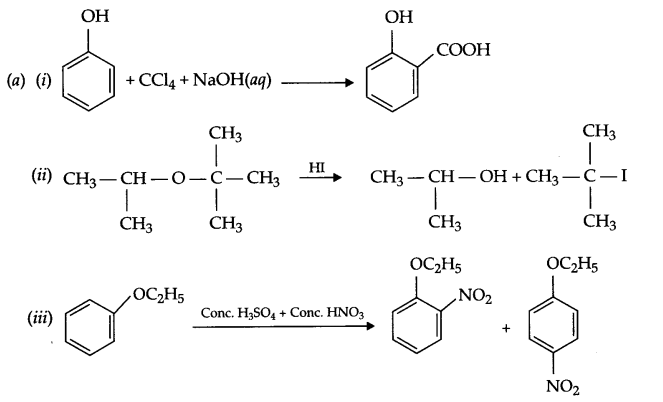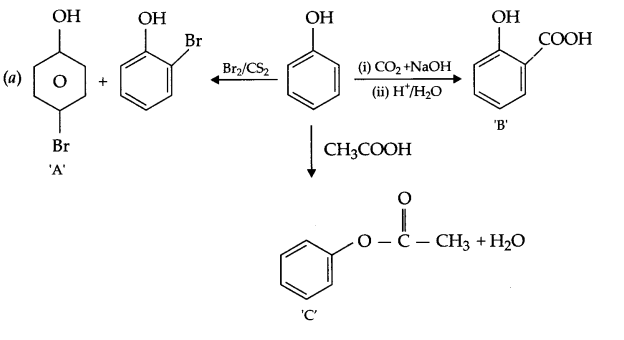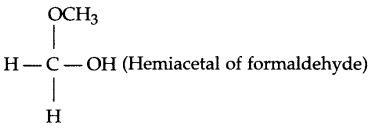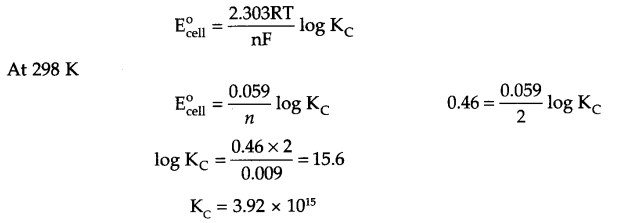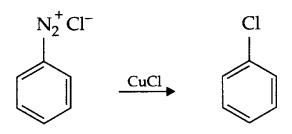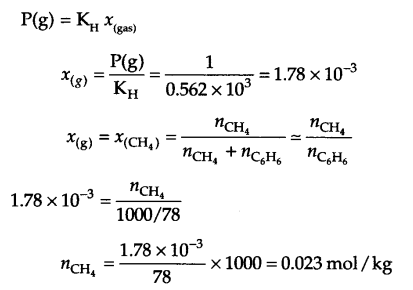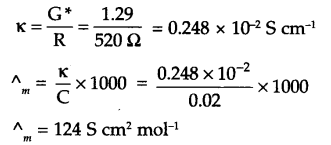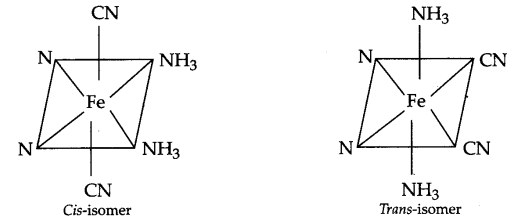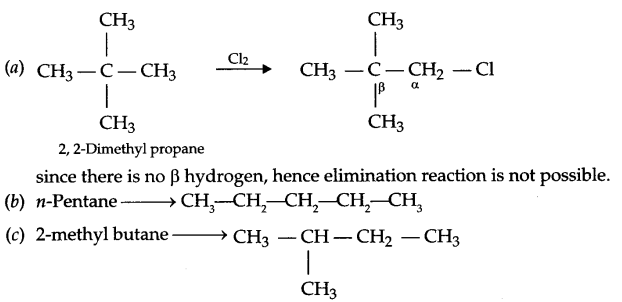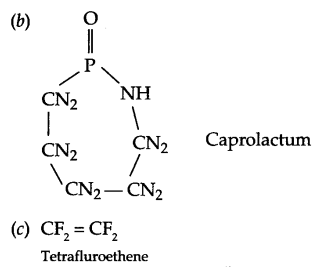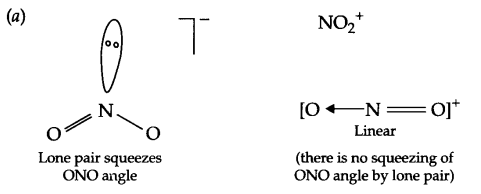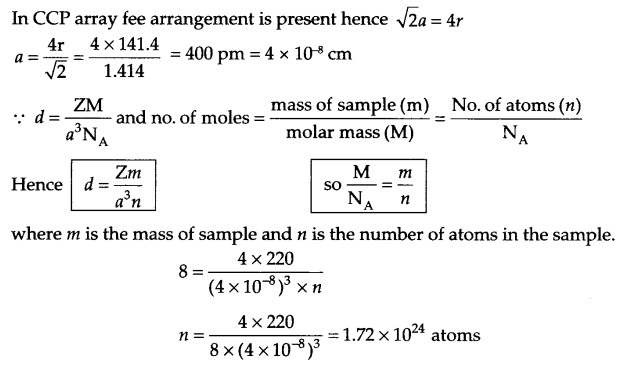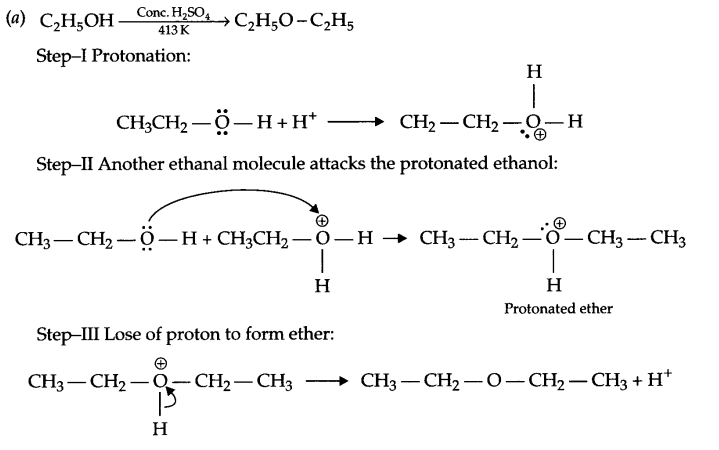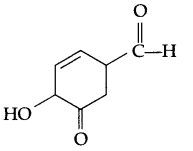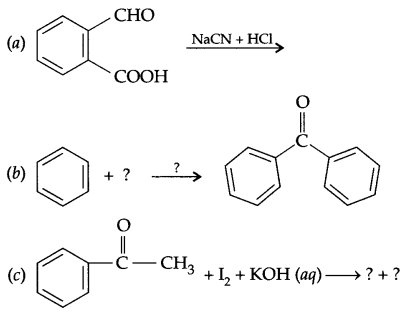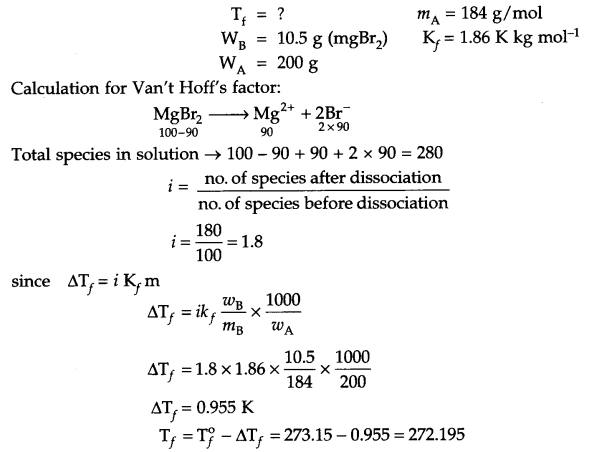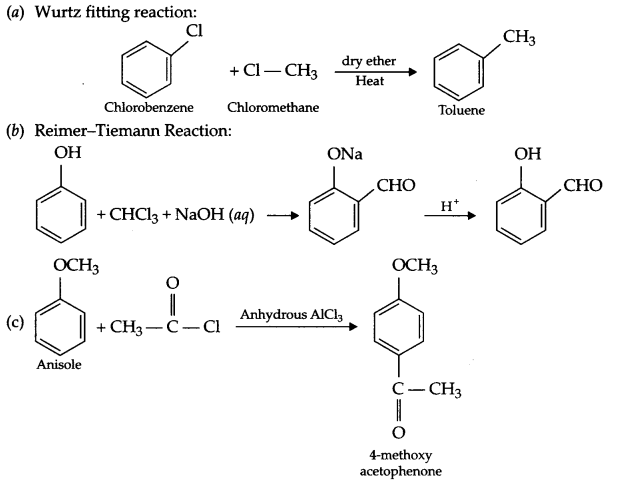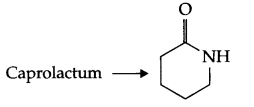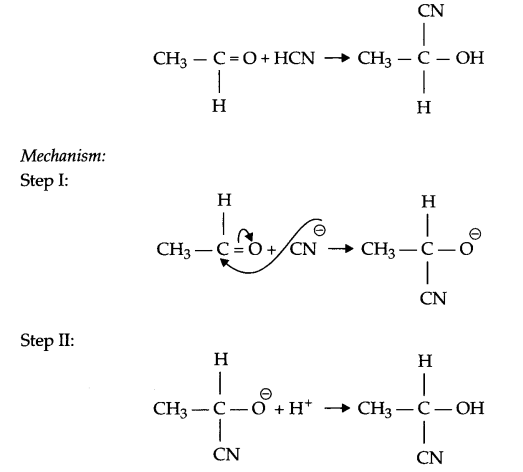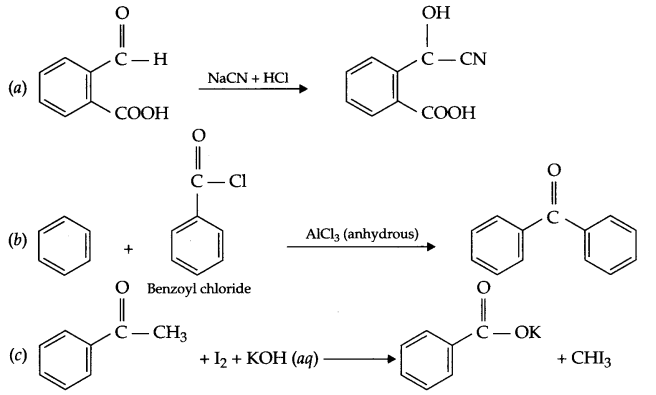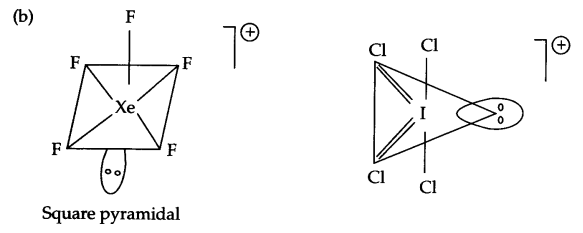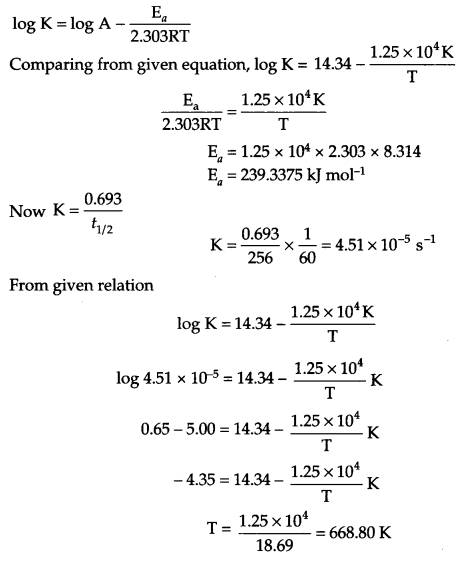CBSE Sample Papers for Class 12 English Core Paper 6 are part of CBSE Sample Papers for Class 12 English Core. Here we have given CBSE Sample Papers for Class 12 English Core Paper 6.
CBSE Sample Papers for Class 12 English Core Paper 6
Students who are going to appear for CBSE Class 12 Examinations are advised to practice the CBSE sample papers given here which is designed as per the latest Syllabus and marking scheme as prescribed by the CBSE is given here. Paper 6 of Solved CBSE Sample Paper for Class 12 Englsih Core is given below with free PDF download solutions.
Time Allowed: 3 hours
Maximum Marks: 100
General Instructions
- This paper is divided into three sections: A, B and C. All the sections are compulsory.
- Separate instructions are given with each section and question, wherever necessary. Read these instructions very carefully and follow them faithfully.
- Do not exceed the prescribed Word limit while answering the questions.
SECTION A
READING (30 MARKS)
Question 1.
Read the following passage carefully. (12 Marks)
1. Pollution has been defined as the addition of any substance or form of energy to the environment at a rate faster than the environment can accommodate its dispersion, breakdown, recycling or storage in some harmless form. In simpler terms, pollution means the poisoning of the environment by man.
2. Pollution has accompanied mankind ever since groups of people settled down in one place for a long time. It was not a serious problem during primitive times when there was more than ample space available for each individual or group’. As the human population boomed, pollution became a major problem and has remained as one ever since. Cities of ancient times were often unhealthy places, fouled by human wastes and debris. Such unsanitary conditions favored the outbreak of diseases that killed or maimed many people living in those times.
3. The rapid advancement of technology and industrialization today is something that man can be proud of. However, it has brought along with it many undesirable results, one of which is the pollution of our environment. Humanity today is threatened by the dangers of air, water, land and noise pollution.
4. The air that we breathe is heavily polluted with toxic gases, chemicals and dust. These consist of the discharge from industrial factories and motor vehicles. The emission of tetraethyl lead and carbon monoxide from exhaust fumes is a major cause for concern too. Outdoor burning of trash and forest fires has also contributed to air pollution. They cause the smarting of the eyes, bouts and coughing and respiratory problems. Owing to the burning of fossil fuels, the level of carbon monoxide in the air is more than desirable. Too high a level of carbon dioxide will cause the Earth’s temperature to rise. The heat will melt the polar caps, thus raising the sea level and causing massive floods around the world. The burning of fuels also produces gases which form acid rain. Acid rain has a damaging effect on water, forest and soil, and is harmful to our health.
5. Man has reached the moon and invented supersonic crafts that can travel faster than the speed of sound. However, these inventions emit pollutants which contribute to the depletion of the ozone layer. This depletion of ozone, which absorbs the harmful rays of the sun and prevents them from reaching the Earth, will have drastic effects on all living things. It will lead to a rise in the number of people suffering from skin cancer.
6. Water pollution has become widespread too. Toxic waste has found its way into our lakes, streams, rivers and oceans. This waste is released by factories and sea-going vessels. Spillage of oil by tankers and during the recent Gulf War has caused irreparable damage to marine life. Thousands of sea animals have died or were poisoned by the pollutants in their natural habitat. As such, it is dangerous for humans to consume sea food caught in polluted waters.
7. Dumping of used cars, cans, bottles, plastic items and all other kinds of waste material is an eyesore. Much of the refuse is not biodegradable and this interferes with the natural breakdown process of converting substances from a harmful form to a non harmful one. As such, it becomes a hazard to one’s health.
8. We are often faced with noises from construction sites, jet planes and traffic jam. we may be unaware of it but noise pollution has been attributed to causing a loss of hearing, mental disturbances and poor performance at work.
9. To control environmental pollution, substances which are hazardous and can destroy life must not be allowed to escape into the environment. This calls for united decision¬making among world leaders and a public awareness of the dangers of pollution.
I. On the basis of your understanding of the passage, answer the following questions by choosing the most appropriate option. (1 × 4 = 4 Marks)
(a) Pollution was not a serious problem in ancient times because:
- people were unsettled.
- lot of space was available.
- population was less.
- all of the above.
(b) Acid rain does not cause:
- smarting of eyes.
- water pollution.
- soil pollution.
- damage to forest.
(c) The number of people suffering from skin cancer will rise because :
- man has invented supersonic aircrafts
- ozone layer is depleting.
- no efforts are being made to repair the ozone layer.
- inventions emit pollutants that deplete the ozone layer which absorbs cancer- causing rays.
(d) If the refuse is not biodegradable it:
- becomes an eyesore.
- interferes with natural breakdown.
- remains a health hazard.
- both (ii) and (Hi).
II. Answer the following questions as briefly as possible.
(e) Explain how recycling can help prevent pollution.
(f) Briefly explain what you understand by the term ‘acid rain’.
(g) What are the hazards of exposure to excessive noise?
(h) How can pollution be controlled?
(i) How is marine life under threat?
III. Find words from the passage which mean the same as:
(a) Faster than the speed of sound (para 5)
(b) house or lodge (para 1)
(c) ugly, blot on the landscape (para 7)
Question 2.
Read the following passage carefully. (10 Marks)
1. One of the principal values of travelling is that, it breaks the monotony of life and work. Life, for most people, is a mad rush from one place to another, from one activity to another, trying to gather as much as possible.
2. In this process, people tend to forget, who they are and what they are. There is no time to ponder and wonder. They tend to forget the values of life. Travelling is a time when people relax, reflect and ponder. Most people, after a pleasant travel, return home with a fresh outlook, new zeal and a better determination.
3. Travelling has also a great informative value. It widens the grasp of our knowledge of geography, different cultures and people, etc. For example, when people of Assam visit South India, they learn a great deal. They come to know about the geographical features of South India, such as the existence of numerous rivers, coconut groves, backwaters, spice gardens, rubber plantations, oceans, seas, factories, cities, etc.
4. They also learn many things about the Dravidian culture which characterize the people’s style of living there. They come to know about their mode of living, social life, agriculture, worship, beliefs, art forms, etc. Such a visit is bound to enlighten the visitor and make him/her more appreciative of other cultures.
5. Travelling has a special importance to students. Many of the things they learn in textbooks can be practically understood when they visit various places. When they visit cities, such as, Kolkata, Mumbai, Delhi, etc, or the famous lakes such as Chilka Lake in Odisha, Logtak Lake in Manipur, Dal lake in Kashmir, etc., their grasp of geography is deepened. Visits to industrial centres, such as, Jamshedpur, Kharagpur, Ranchi, Bangalore, Coimbatore, or important places like Cape Comorin, Madurai, Pondicherry, Goa, Kovalam, Cochin, Bhopal, Srinagar, Chandigarh, etc. open their minds beyond their world. Therefore, travelling has a great academic and scholastic value.
6. Another significant value of travelling is that it has the potential to improve one’s health. A visit to places like Nainital, Darjeeling, Shillong, Panchmarhi, Goa, Kovalam, Ooty, etc. can have tremendous effect on our physical and mental health.
7. The beauty and cold of the hills, the charm of the valleys, the chirping of birds, the song of the rivers, the howling of animals, pleasant air, quiet places, etc., can heal many of our mental and physical problems. In the Indian context, travelling and visiting places have another important value that of understanding other’s traditions and cultures.
8. A visit to various parts of India will make us realize that India is a mosaic of cultures, races and creed and that diversity is the chief hallmark of our land. In this context, travelling can help national integration and unity to a great extent.
9. Thus, travelling has tremendous educative, informative and social value. It widens people’s mental horizon, improves health, adds thrill and relaxation to life, dispels boredom and helps promoting national integration. Therefore educational tour should become an integral part of modern education. Travelling also boosts our national economy and the development of tourism industry.
I. Answer the following questions by choosing the most appropriate option: (1 × 2 = 2 Marks)
(a) In the mad rush of life people forget:
- Who they are
- To wonder and ponder
- Forget their values
- All of these
(b) The example of Nainital has been given to prove that:
- travelling can improve our mental and physical health
- travelling is informative
- travelling introduces us to different states
- travelling has scholastic value
II. Answer the following questions as briefly as possible. (1 × 6 = 6 Marks)
(c) What can be learnt by visiting South India?
(d) How can travelling help students?
(e) How does the charm of the hills impact one’s health?
(f) What does the writer mean by the phrase ‘mosaic of cultures’?
(g) How can travelling promote national integration?
(h) What makes people forget the values of life?
III. Find words from the passage which are similar in meaning to the following.
(a) repetitiveness, boredom (para 1)
(b) tell, explain (para 3)
Question 3.
Read the following passage carefully. (8 Marks)
Although stupidity is commonly defined as ‘a lack of normal intelligence’, stupid behaviour is not the behaviour of a person lacking in intelligence but the behaviour of a person not using good judgement or sense. In fact, stupidity comes from the Latin word that means ‘senseless’. Therefore, stupidity can be defined as the behaviour of a person of normal intelligence who acts in a particular situation as if he or she isn’t very bright. Stupidity exists at three levels of seriousness.
First is the simple, relatively harmless level. Behaviour at this level is often amusing. It is humorous when someone places the food from a fast food restaurant on the roof of the car while unlocking the door and then drives away with the food still on the roof. We call this absent-minded. The person’s good sense or intelligence was temporarily absent. At this level, other than passing inconvenience or embarrassment, no one is injured by the stupid behaviour.
The next type—serious stupidity—is more dangerous. Practical jokes such as putting sugar in the salt shakers are at this level. The intention is humorous, but there is a chance of harm. Irresponsible advice given to others is also serious stupidity. An example is the person who plays psychiatrist on the basis of an introductory psychology course or doing a TV program on psychiatry. The intention may be to help, but if the victim really needs psychiatric help, an amateur will only worsen the situation.
Even worse is the third kind of stupidity. Kind people, who would never injure another living being, stupidly throw away a box of six-week-old kittens along a country road. Lacking the heart to kill the poor things, they sentence them to almost certain death from wild animals, infections, exposure or the wheels of a passing vehicle. Yet they are able to tell themselves that ‘they will find nice homes’ or ‘animals can get along in the wild’. Another example of this kind of stupidity is the successful local businessman who tries to have as many office affairs as he can get away with. He risks the loss of his business and his home. He fails to see that what he is doing is wrong. This is the true moral stupidity of a person not willing to think about the results of his actions or take responsibility for them. The common defence of a person guilty of stupidity is—‘But I didn’t think ’ This, however, is not a proper excuse, especially when serious or harmful stupidity is involved. (All India (C) 2015)
A. On the basis of your reading of the above passage make notes on it, using headings and sub-headings. Use recognizable abbreviations (wherever necessary—minimum four) and a format you consider suitable. Also supply an appropriate title to it. (5 Marks)
B. Write a summary of the passage in about 80 words. (3 Marks)
SECTION B
ADVANCE WRITING SKILLS (30 MARKS)
Question 4.
Your club is going to organize an interclass singing competition. Write a notice in about 50 words inviting names of the students who want to participate in it. Give all necessary details. You are Navtej/ Navita, secretary, Music Club, Akash Public School, Agra. (All India 2015) (4 Marks)
OR
You have cleared your class 12 CBSE Examination and so want to sell off the reading material you have with you. Write an advertisement to be placed in the ‘For Sale’ columns of a local daily giving all necessary details of the material you have in not more than 50 words. You are Mohan/Mohini, Contact No. 9811111111.
Question 5.
You are Mohit/ Malini living at C-10, Ghaziabad. You recently came across beggars both adults and little children begging at red lights. Write a letter to the Editor of Times of India expressing your views about it. (120-150 words) (6 Marks)
OR
You are the Principal, Akash Public School, Ajmer. Yesterday you received a letter of enquiry from Mr. P.L. Sharma resident of 12, Abu Bakr Road, Dubai who wants his daughter, Navita, at present studying in class VIII, Indian School next year, in class IX. He wants to know all about your school. Write a letter in 120-150 words to Mr. Sharma. (120-150 words) (Foreign 2015)
Question 6.
You are Karun/ Karuna. Write a speech in 150-200 words on ‘The Importance of Sports’ to be delivered in the school assembly. (10 Marks)
OR
Outside the school gate there are a few food carts. They don’t observe strict hygienic standards. You have observed that so many of your school students go to them immediately after the school is over. This can create health problems. As Principal write a speech in 150-200 words on ‘Healthy Food’, to be delivered in the morning assembly. (Delhi (C) 2015)
Question 7.
Within a few months you will be joining college. How do you look at college life? Is it freedom from strict discipline imposed on you by the school? A carefree life with no worries of completing assigned homework? Or, is it the beginning of responsible preparation for brilliant career? Write an article in 150-200 words on what you think of college life? You are Navtej/Navita. (Foreign 2015) (10 Marks)
OR
You are Navtej/ Navita of Akash Public School, Agra. Recently your school had an Inter House English Debate. Write a report on it in 150-200 words for a local newspaper.
SECTION C
TEXTBOOKS AND EXTENDED READING TEXT (40 MARKS)
Question 8.
Read the following extract carefully and answer the questions that follow: (1 × 4 = 4 Marks)
and (All India 2015)
looked out at Young
Trees sprinting, the merry children spilling
out of their homes, but after the airport’s
security check, standing a few yards
away, I looked again at her, wan, pale
as a late winter’s moon and felt that old familiar ache
(a) How can the trees sprint?
(b) Why did the poet look at her mother again?
(c) What did she observe?
(d) Identify the figure of speech used in these lines. ‘
OR
On their slag heap, these children
Wear skins peeped through by bones and spectacles of steel
With mended glass, like bottle bits on stones.
(a) Who are these children?
(b) What is their slag heap?
(c) Why are their bones peeping through their skins?
(d) What does ‘with mended glass’ mean?
Question 9.
Answer any four of the following questions in about 30-40 words each: (3 × 4 = 12 Marks)
(a) What did garbage mean to the adults of Seemapuri and to their children? (All India 2015)
(b) How did Rajkumar Shukla establish that he was resolute? (All India 2015)
(c) Why did Sophie like her brother Geoff more than any other person? From her perspective what did he symbolize?
(d) Bama’s experience is that of a victim of the caste system. What kind of discrimination does Zitkala-Sa’s experience depict? What are their responses to their respective situations? (NCERT)
(e) What is it that draws Derry towards Mr. Lamb? (NCERT)
(f) What or whom is aunt Jennifer terrified with in the third stanza? {NCERT1}
Question 10.
Education is the most effective tool in erasing discrimination and inequality. Discuss with reference to the chapter ‘Memories of Childhood’. (120-150 words) (6 Marks)
OR
Even today so many among us believe in superstitions. An astrologer predicted about ‘the tiger king’ that he would be killed by a tiger. He killed one hundred tigers yet was himself killed by a tiger. How did the superstitious belief prevail? (All India 2015)
Question 11.
Everybody during the last lesson is filled with regret .Comment. (The Last Lesson) (120-150 words) (All India 2015) (6 Marks)
OR
Sophie lives in a world of impossible dreams. Comment.
Question 12.
How does William Dane betray Silas Mamer? (120-150 words) (6 Marks)
OR
Describe the burglary at Mr. Bunting’s house. (120-150 words)
Question 13.
Evil can give rise to only evil. Describe the character of Dunstan Cass in the light of this remark. (120-150 words) (6 Marks)
OR
Write a short note on Mr. and Mrs. Hall. (120-150 words)
ANSWERS
Answer 1.
I(a) (iv) all of these
(b) (i) smarting of eyes
(c) (iv) inventions emit pollutants that deplete the ozone layer which absorbs cancer- causing rays
(d) (iv) both (ii) and (iii)
II. (e) In recycling, we get natural products back from used material by treating it. For example, when we recycle old newspaper, we treat the used material so that it can be used again. This prevents the used products from polluting the environment.
(f) The burning of fuels also produces gases which form acid rain. Acid rain has a damaging effect on water, forest and soil, and is harmful to our health.
(g) Noise pollution has been found to cause loss-of hearing, mental disturbances and poor performance at work.
(h) To control environmental pollution, substances which are hazardous and can destroy life must not be allowed to escape into the environment. This calls for united decision-making among world leaders and a public awareness of the dangers of pollution.
(i) Toxic waste has found its way into our lakes, streams, rivers and oceans. This waste is released by factories and sea-going vessels. Spillage of oil by tankers and during the recent Gulf War has caused irreparable damage to marine life.
III. (a) Supersonic (b) Accommodate (c) Eyesore
Answer 2.
I. (a) (iv) All of these
(b) (i) travelling can improve our mental and physical health
II. (c) We can learn about the features of south India, such as the existence of numerous rivers, coconut groves, backwaters, spice gardens, rubber plantations, oceans, seas, factories, cities, etc.
(d) Travelling has a special importance to students. Many of the things they learn in textbooks can be practically understood when they visit various places.
(e) The beauty and cold of the hills, the charm of the valleys, the chirping of birds, the song of the rivers, the howling of animals, pleasant air, quiet places, etc., can heal many of our mental and physical problems.
(f) The phrase ‘mosaic of cultures’ means assortment of diverse cultures. He wishes to point out how travelling exposes one to a mixture of diverse cultures.
(g) By travelling the traveler gets exposure to diverse lands and cultures which are all beautifully united under one nation.
(h) Today people lead a hectic life in pursuit of getting as much as possible. They have no time to ponder and wonder and thus tend to forget the values of life.
III. (a) monotony (b) enlighten
Answer 3.
A. TITLE : Stupidity
NOTES :
(a) What is stupidity?
- comes from the latin word = senseless
- lack of normal int’ce
- not using commn judgement
(b) STU-three types
1. first type
- harmless
- caused due to absentmindedness
- Causes inconv, embarsmnt
2. second type:
(i) may be called serious stu
(ii) occurs due to
(a) practical but harmful jokes
(b) harmful advice
3. 3rd type- moral stu
(i) occurs due to
(a) unwillingness to think about result of one’s actions
(b) unwillingness to hold oneself responsible
Key to Abbreviations
int’ce : intelligence
commn : common
stu : stupidity
inconv : inconvenience
embarsmnt : embarrassment
B. SUMMARY
Stupidity comes from the Latin word meaning ‘senseless’. It means lack of common sense and not using good judgement. There are three types of stupidity. The first type is essentially harmless and is caused due to absent-mindedness. It may cause embarrassment and inconvenience. The second type results from giving harmful advice or making practical and harmful jokes. Moral stupidity results from unwillingness to hold oneself responsible for one’s actions or to think about the consequences of one’s actions.
Answer 4.

Answer 5.
C-10, Ghaziabad
8th September, 20××
The Editor
The Times of India
Delhi
Sub: Problem of Begging in India Sir,
I would like to request you to kindly give a little space to my letter in your esteemed newspaper.
The problem of beggars in India is a matter of great shame and concern. Both adults and children are seen at the bus-stop, at red lights, near temples, at market, etc. A beggar is a stigma. He is a burden on society. Begging neither involves physical labour nor mental exertion. Some beggars earn more than most of the low paid persons. They get used to a life of leisure.
Some people deceive others pretending to be handicapped and beg in the name of God. God-fearing and charitable people give them alms. They pose to be deaf and dumb in order to arouse the sentiments of the passerby and evoke their sympathy. They do not spare even foreign tourists and these foreigners get a bad image about our country due to these beggars. They even push their little children into this menace.
It is a sin against humanity to patronize beggars. With our help we are spoiling a person and are creating a problem for the society by adding to the number of beggars. The authorities should put a ban on begging so that the pursuers and perpetrators of begging should be dealt with an iron hand.
Yours faithfully
Mohit
OR
Akash Public School,
Ajmer
6th September, 20××
P.L Sharma
Abu Bakr Road,
Dubai
Sub: Facilities offered by Akash Public School, Ajmer
Sir
I am delighted to receive your letter of enquiry about the various facilities offered by our school and am happy to give you an overview of our school.
Akash Public School offers excellent educational facilities which are continually being extended and developed. A successful programme of building development has occurred at the school over recent years.
The Sports Centre has a magnificent 25 meter indoor heated swimming pool. The centre also includes squash courts, weight-training room, large sports hall, complete with 7.5m high climbing wall, and a smaller multi-purpose gymnasium.
The Music Department includes a recital room, keyboard room and several practice rooms. The Science Centre opened recently provides some of the best facilities for teaching science of any school in Ajmer.
The building has a floor dedicated to each of the Biology, Chemistry and Physics departments and includes four spacious laboratories.
We follow the CBSE Curriculum. Cultural activities are given equal time in the curriculum. I sincerely hope that this overview of our school will persuade you to admit your daughter in our progressive school.
Regards
Madan Sood
Principal
Answer 6.
Good morning, respected Principal, teachers and students! I, Karuna, am here to deliver a speech on the importance of sports and games in one’s life. Games and sports are an integral part of a student’s life. A student should study hard to be successful in competitive examinations. But, he should also play games and sports to enjoy the health and vigour of life.
Along with bookish learning, a student should spend his time on games and sports. There are many people who give importance only to bookish knowledge. Indeed, there is often no provision for games at all. There are many benefits of games and sports in education. Outdoor games such as football, cricket, badminton, tennis, etc. gradually build our personality. It is completely optional for the students to participate in games and sports and as a matter-of-fact very few take part in school or college games. The training for different branches of games and sports should be given in a scientific way under a good coach, according to the ability and interest of the student.
Inclusion of games in the curriculum of studies is, therefore, very important in modern times. Remember, ‘All work and no play makes Jack a dull boy’. ‘
Thank you
OR
Good morning, respected Principal, teachers and students! Today I am going to speak on ‘Hygiene’ as a way of life. It is a habit that needs to be focused on and inculcated in children at an early age. And it need not be restricted to our bodies alone; it needs to be maintained through our diet and surroundings as well. Let’s see how we can go about this.
Do not eat food from roadside stalls. Such roadside food stalls are the main causes of stomach disorders and water-borne diseases. There is no surety of the quality of the materials that they use.Your favourite samosas can give you a terrible stomach ache! A proverb says that health is wealth. It is truly said that of all things in the world, health is the most valuable that one can possess. Money is no doubt a pleasant thing. However, it can give no pleasure to a man of ruined health. As body and mind are closely connected, the mind cannot be sound and cheerful without sound health. Wholesome food gives good health. Vegetables and many other things that we generally take are nutritious food. A mixed diet is the best food for us. Stale and rotten food is dangerous for health. I hope you will adopt healthy eating habits for your good health.
Thank you
Answer 7.
College Life
By Navtej
Many young adults seem to believe that college life is filled with parties and typically a laid-back lifestyle. They imagine a lifestyle with no other worries besides occasional tasks. It is often said that college is the greatest time of one’s life; many high school students believe this and look forward to it. Some enjoy the idea of being able to come to class late, leave when they want, and pretty much have say-so of their own lives now that their parents are out of the picture. The majority of freshmen enter college picturing it an easy and fun-filled ride.
College is a very important part of your life because it is going to prepare you mentally and physically for your future. Higher studies equip you with knowledge, skills that give you the required leverage for a fulfilling career. It is the time for greater exposure to a variety of people, and different ideas. It is truly the time for building one’s personality, understanding oneself, exercising independence and realizing one’s potential.
No doubt college life is exciting but it also comes with its share of responsibilities.
OR
Akash Public Scool Hosts English Debate
By Navita
Agra, 8th September: An Inter house English Debate competition for the juniors (standard IX and X) was held on 7th September, 20xx. The format of the debate was a bit different as the day witnessed the prelims wherein Narmada and Cauvery had to debate on the topic, ‘Does the Present Education System Provide Holistic Education?’ Whereas the other two houses Ganga and Godavari exhibited their debating skills on the topic, ‘RTE: A Boon for the Underprivileged’.
The competition was judged by Mrs. Prabhjot and Mrs. Shanti Sateesh and moderated by Monisha C S and Deeksha Arora. It was very evident that the teams were well prepared and they used various skills like overstatement, definition, irony, etc. to convince the audience. The participants, armed with statistics and data made their arguments more emphatic with their facial expressions, body movement and gestures. All the four teams exhibited great oratorical skills but finally the two teams that were declared winners were Ganga and Narmada. Mrs. Prabhjot said, “The standard of the debate was awesome.” The final will be held shortly and it is expected to be laced with more nail biting moments and an intense face off.
Answer 8.
(a) Trees appear to be sprinting because of the relative motion of the moving car in which the poet is seated.
(b) The poet looked at her mother again because she was leaving and wanted to see her pale and weak face lest this should be the last time.
(c) She observed how wan and pale her mother had become.
(d) The figure of speech is simile. The pale and dull visage of the mother has been compared to the late winter moon.
OR
(a) The children belong to the slums in which the elementary school is situated.
(b) Their frail, undernourished bodies are like garbage heaps or slag.
(c) The children are so weak and thin that it appears as if their bones are visible through their skins.
(d) This refers to the broken and mended lenses of the spectacles they are wearing.
Answer 9.
(a) Garbage was a means of survival to the adult ragpickers of Seemapuri. Their daily bread depended on it. While for the children it was like gold, since they sometimes found money in it. So they were motivated to scrounge in the garbage heaps.
(b) Rajkumar Shukla is being described as being ‘resolute’ because he was fully determined to take Gandhi to Bihar. Being an illiterate and poor share-cropper from Champaran, he had come to apprise and complain to Gandhi about the injustice of the landlord system in Bihar. He met Gandhi in the Lucknow session of the Congress. He was too committed to accompany Gandhi everywhere. Gandhi was very much impressed by his tenacity and fixed time for Calcutta. Months passed in waiting. Shukla was sitting at the haunches at the fixed place in Calcutta, till Gandhi was free. Finally both boarded a’ train to Patna.
(c) Geoff spoke little. Words had to be prized out of him like stones out of the ground. Sophie was jealous of his silence. She knew when he was not speaking, he was away somewhere. He was out in the world in those places she had never been. She wanted to share her brother’s affections. He was more tolerant of her wild stories than her father. He did not believe her but wasn’t harsh to her.
(d) In spite of Zitkala-Sa’s hard struggle for not letting her hair be shingled, her long hair is forcefully removed. In ‘The Cutting of My Long Hair’ She describes how she suffered extreme indignities. She tried to maintain her identity and her distinct culture of native America. The British colonizers wanted to stamp their own ways on her personality. This is an example of racial discrimination. Bama a dalit, on the other hand suffered due to caste system prevalent in India. Both fight discrimination through education and spreading awareness about it through their writings.
(e) Mr Lamb is a physically challenged man. He has got a tin leg. The real one got blown off, years back. Children tease him calling him “Lamey – Lamb”. But Mr Lamb never minds such things. He has a positive attitude towards life. He likes to talk and have company. He is open and never shuts himself in.
Mr Lamb’s meeting with Derry brings a turning point in Derry’s life. He gives confidence to Derry. He persuades him that he can get better than rest of the people. He should stop hating people. Hatred burns oneself away inside. Derry should take life as it is. This leaves a deep impression on Derry.
(f) Aunt Jennifer’s terrified hands are referred to in the third stanza. The old unhappy memories are still fresh in her mind. During her married life, she had passed through difficult times. These ordeals have crushed and suppressed her. Aunt Jennifer is still ringed with those ordeals that dominated her life.
Answer 10.
Education brings and prosperity, honour, equality and dignity. Bama was inspired by her elder brother’s words on education. She studied hard and stood first in the class. Then many friends came to her on their own accord. Education is the only tool to end discrimination as it subscribes to the principles of merit and sincerity. It can rise above the considerations of caste, race, creed, religion and gender which have been plaguing our world since time immemorial. Thus it is secular and progressive and open for all. Both Bama and Zitkala-Sa took recourse to education as an antidote to the discrimination and humiliation that they experienced in their lives. They grew up to be noted writers spreading awareness against discrimination through their writing.
OR
Superstition is blind belief. It is irrational yet it exists in the human mind in varying degrees. It hampers the progress of society and compels people to commit foolish and dangerous actions. In the story ‘The Tiger King1 the astrologer predicted that the tiger king would be killed by the hundredth tiger.
So the Maharaja began his campaign of tiger-hunting with rare single-mindedness. Within a span of ten years he killed 70 tigers. It was his master strategy to marry a girl of a state which had a large tiger population. So he was able to kill 99 tigers in all.
The tiger king could pay any price to maintain his kingdom. He had to give a bribe worth three lakh rupees to a high ranking British official to retain his kingdom. He could be hot-headed and doubled the tax on the people. It is ironical that the King met his death by a tiger, albeit a wooden one. At last, the hundredth tiger took revenge upon him and the superstition prevailed.
Answer 11.
Two French speaking districts of Alsace and Lorraine came under German occupation. German language was imposed on the people of Alsace. M. Hamel, a school teacher, broke this shocking news to his students. He declared that a new teacher would replace him to teach German. The news aroused regret and patriotic feelings in students as well as the villagers. The villagers were filled with regret that when they had all the time in the world they procrastinated learning their language under many pretexts. Now they had lost that opportunity to learn their own language. So the village elders came to the school to listen to the last lesson in French. The small children were extraordinarily n attentive to their learning that day. Franz regretted not valuing M. Hamel’s teaching. Hamel described French the most beautiful language in the world. Everyone listened to him with rapt attention and respect.
OR
Sophie is a school going girl. She lives in a dream world which has distant relation with the harsh realities of life. She dreams of big and beautiful things beyond her reach or her means. She thinks of having a boutique. Then she entertains the idea of being an actress and a fashion designer too. Here she is poles apart from her classmate and friend i Jansie. Jansie is realistic and practical. Sophie’s romantic and dreamy disposition leads her to hero-worship. The hero of her dreams is the young Irish wonder-footballer Danny Casey. She has developed a romantic fascination for him. Even Geoff cautions her that Casey is a celebrity. She sits for hours imagining Danny Casey coming to her. She knows that he will never come. She becomes sad but helpless. She lives with all her dreams and disappointments. They are not real. They are all the creations of her mind.
Answer 12.
In Lantern Yard, Silas had a close friend named William Dane. One day the elder deacon fell ill and had to be tended day and night by members of the congregation, as he was a childless widower. During Silas’ watch, a bag of money disappeared from a drawer by the deacon’s bed. Silas’ knife was found in the drawer, but Silas swore that he was innocent 1 and asked that his room be searched. The empty bag is found there by William Dane. William had deliberately placed Silas’s knife in the drawer when he stole the money. Silas remembers that he had last used the knife to cut a strap for William. Thus Silas is framed by William for stealing the money. In order to find out the truth, the church members resorted to prayer and drawing of lots, and found Silas guilty. A month later William Dane married Silas’ fiancee.
OR
The burglary occurs in the house of Mr. Bunting in the small hours of the morning. Mrs. Bunting, the vicar’s wife, wakes up at the sound of bare feet walking through her house. She .wakes her husband and the two watch and listen as a candle is lit and papers are rustled in the study. When they hear the telltale clink of money, Rev. Bunting rushes into the study with a raised poker, but the room appears to be empty. Their money disappears and at one point they hear a sneeze in the hallway but are unable to locate or see the intruder. The Buntings are astonished that there.is so much movement yet there is no sign of the agent of these amazing happenings. They have no explanation for what they witness in their house.
Answer 13.
It is true that one who does evil will be surely visited by evil. The example of Dunstan Cass in the novel Silas Mamer amply proves this.
Dunstan Cass is a reckless, manipulative man who will do anything or say anything to get what he wants. Godfrey’s younger brother, Dunsey, as he is usually called, is cruel, lazy, and unscrupulous, and he loves gambling and drinking. He is attracted to greed and wealth, and has no conscience whatsoever. He blackmails Godfrey with the secret of Godfrey’s marriage to Molly who is a drunkard and steals poor Silas Marner’s money. In most part of his life, Dunstan gets away with being very nasty to almost everyone never having to face the consequences. However, this luck is quickly reversed when he dies by falling into a stone pit shortly after stealing Silas’ money. It is true that one reaps what one sows.
OR
Mr. Hall and Mrs. Hall are two interesting minor characters in the novel The Invisible Man. They have married recently. Of the two Mrs. Hall is the bolder and more enterprising. She runs the Coach and Horses Inn. Her business skills are on full display when Griffin comes to the inn. She offers him every possible service. She is talkative and appreciates getting a customer in the freezing cold of February. Mr. Hall on the other hand runs a cart. He is much dominated over by Mrs. Hall. He is slow and dense that why is not much trusted by his wife. However he gets the better of her once, when he points out that she had given lodgings to the queer stranger without ascertaining his identity. Mrs. Hall has a show down with the stranger over nonpayment of bills, following which the stranger is compelled to reveal his identity. Her tough stand in this regard brings out her business minded and shrewd nature, once more.
We hope the CBSE Sample Papers for Class 12 Englsih Core Paper 6 help you. If you have any query regarding CBSE Sample Papers for Class 12 English Core Paper 6, drop a comment below and we will get back to you at the earliest.
![]()

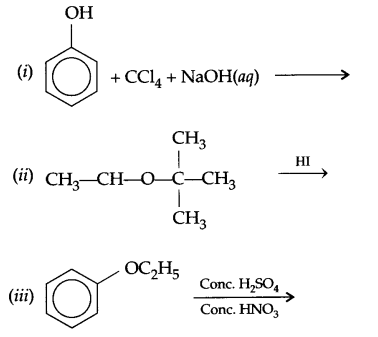



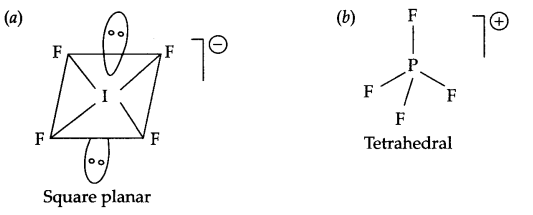
![]()

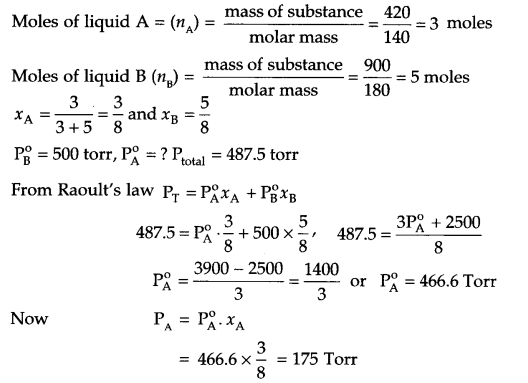



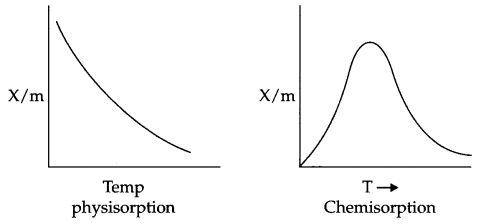
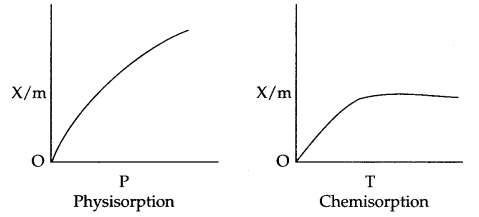

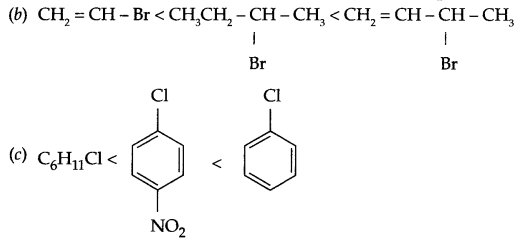



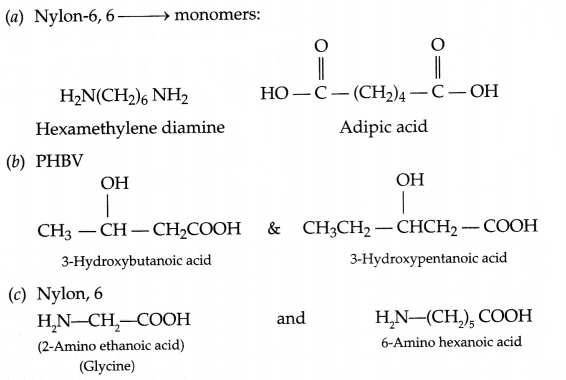

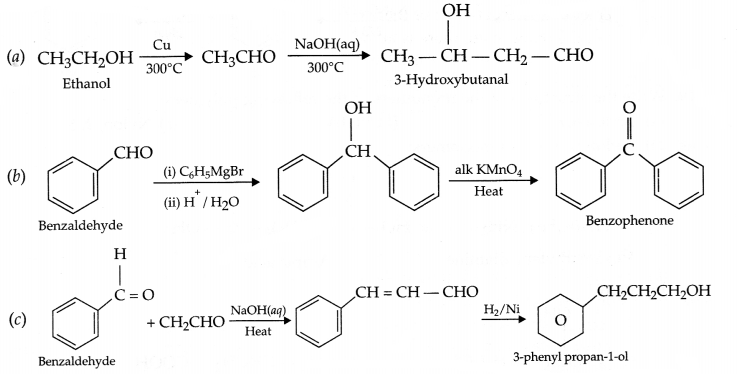


![]()

